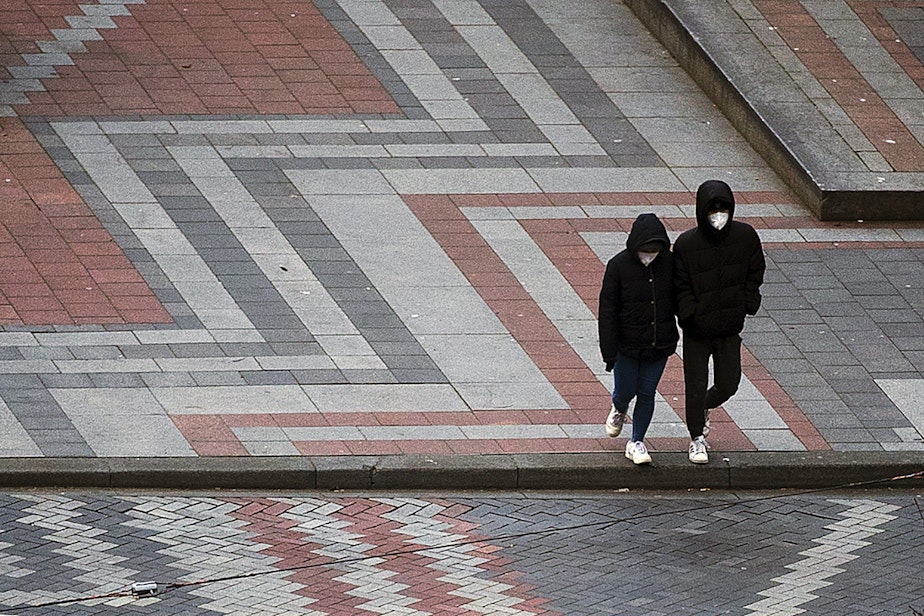Spread of Covid-19 slowing much faster than expected in Washington, but 'We can't let up our guard'

A new report states that social distancing efforts in Pierce, King, and Snohomish Counties have dropped the spread of the coronavirus much faster than previously expected.
But officials warn that relaxing current efforts could reverse the progress made over recent weeks.
The April 10 report titled "Physical distancing is working and still needed to prevent COVID-19 resurgence in King, Snohomish, and Pierce counties" was produced by the Institute for Disease Modelling in Bellevue.
Harborview, UW medical centers to test all incoming patients for Covid-19
It includes the most recent data through April 7 and concludes the "effective reproduction number in King County declined further through March 25 ... This decline exceeded the short-term forecast in our previous report and reflects further reductions in COVID-19 transmission."
"This new report confirms that working together through this crisis with unwavering commitment is slowing this serious disease,” said Dr. Kathy Lofy, Washington State Health Officer. “Our collective efforts are working, but we can’t let up our guard.”
Differences between March and April
Researchers at the institute state that "we find that the epidemic has slowed further and that the effective reproduction number in King County in late March was near and possibly below one, with a point estimate of 0.73 ... Similar trends are observed for Snohomish and Pierce counties..."
Getting the "reproduction number" to below 1 is significant. To put it simply, it implies that one person is not infecting another. According to a graph included in the report, the rate could decline in all three counties to below 1 later in April and continue downward.
The new data is an update to a previous report which stated that King County was already dropping its rate of transmission by mid-March. That report was often quoted by local and national officials. It concluded that social distancing reduced the average rate of transmission from about 2.7 in early March, to about 1.4 by March 18.
The recent update indicates that social distancing has continued that downward trend.
Rebound is possible, don't change current efforts
The report warns against any easing up on social distancing in the near future across the three counties. That would most likely lead to a "rebound" of the virus.
Dr. Jeff Duchin, Health Officer for Public Health – Seattle & King County said during a press briefing Tuesday that, while the new report is very encouraging, there’s a level of uncertainty around the numbers and the region is in no way ready to ease back on social distancing measures.
“There are a number of things that need to be in place before that can happen,” Duchin said. Among them, increased testing and contact tracing capability, as well as ensuring adequate capacity in local hospitals in case of a second surge of patients.
Any transition out of measures like stay at home orders will need to be done carefully, Duchin said.
He said each step will need to be taken gradually and be followed by a period of observation to gauge the impact and any resurgence of cases.
“The virus isn’t going anywhere,” Duchin said. “The vast majority of us are still susceptible. If we resume to have the type of contact we had prior to social distancing, this epidemic will rebound big time and we’ll see lots of cases and perhaps a peak that was even larger than what we’ve already experienced,” he said.
Duchin said it would be wise to keep social distancing measures in place for at least another month. He said it’s difficult to determine a longer timeline to indicate when some easing could occur.
This story has been updated

